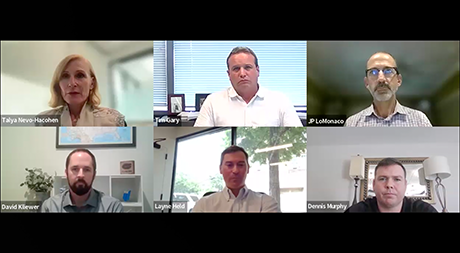By Matt Valley
Following a quiet end-of-summer period on the dealmaking front — “quieter than it has been for years with the exception of the pandemic” — Sabra Health Care REIT Chief Investment Officer Talya Nevo-Hacohen encountered a flurry of transaction activity in late August and early September.
“It’s been gangbusters, and what we’re seeing is primarily seniors housing assets (independent living and assisted living) coming to market,” said the veteran REIT executive who participated in the webinar Seniors Housing Business hosted on Sept. 5, titled “Creating Value in Seniors Housing — The Economics of Dealmaking in This Cycle.”
A fair number of those sellers are private equity firms, and the deals are mostly “one-offs and sometimes twosies and threesies,” said Nevo-Hacohen, who’s been with Sabra for 14 years. “We haven’t seen large portfolios [come on the market] in the U.S., just in Canada. We are only invested in the U.S. and Canada, so I can’t speak to Europe.”
As of June 30, the Tustin, California-based REIT’s seniors housing portfolio consisted of 236 skilled nursing/transitional care facilities, 39 seniors housing communities (“seniors housing – leased”) and 66 seniors housing communities operated by third-party property managers (“seniors housing – managed”).
“I agree with Talya. I think there appears to be a flurry of opportunities coming. Whether we participate or not remains to be seen, but there will be some interesting announcements between now and the end of the year,” predicted Layne Held, principal and chief investment officer at Atlas Senior Living and Salta Capital.
Based in Birmingham, Alabama, Atlas operates approximately 35 senior living communities in Alabama, Florida, Georgia, Kentucky, Mississippi, South Carolina, Tennessee, and Texas. Atlas specializes in independent living, memory care and assisted living.
Moderated by JP LoMonaco, executive vice president at CBRE, sponsor of the webinar hosted by France Media, other panelists on the broadcast included Tim Gary, CEO of Galerie Living; David Kliewer, co-head of national seniors housing investment sales at Continuum Advisors; and Dennis Murphy, chief investment officer at Priority Life Care.
Kliewer said that the lion’s share of activity for the Land O’ Lakes-Florida-based brokerage firm over the past 24 months has involved non-stabilized assets.
“We’ve done a lot of work in bankruptcy sales, receivership sales, or just private owners that want to strategically prune assets in their portfolios. That’s probably at least three quarters of what we’ve been doing.”
While the distressed sales part of the business continues for Continuum, Kliewer has noticed an uptick in activity among performing assets. “We seem to be doing more opinions of value on better performing assets.”
As real estate fundamentals improve, Continuum is starting to undertake more valuation work for well-stabilized, cash-flowing properties.
Adversity Creates Opportunity
Over the past two years, most seniors housing owners were inclined to ride out the storm caused by higher interest rates and hold onto their assets, said Murphy of Priority Life Care. He emphasized that the only active sellers were those in a position where they needed to sell.
Priority Life Care manages 70 communities, primarily under third-party management agreements, but is in the process of raising capital for a joint venture fund that will acquire assets.
“What we’re hoping as I go out there to raise a joint venture fund and start buying assets is that the opportunities are still out there for the next year to year and a half, and that you can still get in at a good basis, where it’s a little bit of a lower valuation than it would otherwise have been,” said Murphy.
Seniors housing will remain a strong asset class for the long term, said Murphy. Still, he noted that attractive opportunities exist today to acquire unstable assets that suffered through the COVID-19 pandemic and the spike in interest rates but which have huge upside potential. “So, that’s what we’re going after from a strategy standpoint. Hopefully, newer vintage too.”
To view the full webinar, click here.

